The content of the article
If cats and dogs in Russia are traditional domestic animals that can be found in every third apartment of a modern metropolis, then the decision of someone to have a ferret will most likely be surprised by the surrounding society. Otherwise, these rodents are called weasels, and they belong to the family of weasels, which is famous for the fact that its representatives can adapt to virtually any environmental conditions, and therefore are distributed almost over the entire surface of the Earth, excluding the pole regions.
Due to the fact that ferrets differ somewhat in their behavior from cats or dogs, it is simply necessary to know the tendencies of the animal, its habits, and the secrets of the content. The decision to start a ferret, firstly, means that an unpleasant odor can appear in the apartment only at first, which will mean that the animal is frightened by something.This smell is produced with the help of special glands, which are included only if the knuckle feels the danger and decides in such a peculiar way to frighten the enemy and clearly indicate their intentions.
Important: domestic ferrets, fully accustomed to the cage and the apartment, are not inclined to this; moreover, their wool gives off honey aroma, while urine and feces do not emit any odor whatsoever.
House preparation
Before you start a ferret, it is imperative to make sure that the conditions in the apartment or house will allow, firstly, the animal to move freely in any direction, and secondly, not to stumble upon large pots with plants standing on the floor. Since in a natural environment weasels are burrowed animals that love to bury found things in terrestrial “storages”, then, upon seeing a huge pot with soil, the pig will instinctively rush to it with the aim of organizing a hiding place.
Important: it is necessary for a ferret to move freely around the apartment or house, since this animal simply cannot be in a cage all the time. At first, the ferret will begin to sleep more than the required 13-14 hours, then it will begin the process of atrophying the limbs, and after it will finally lose interest even in food.
As soon as the ferret is released from its cage, he will want to research all the surroundings and mark them - this is a fairly natural process, typical of most animals. He, like cats and dogs, just rubbed his hair on all the protruding surfaces, leaving a scent that a person is not able to feel.
It is also necessary to remove all small items that the ferret is able to hook or even lift with its paws. Even if he does not find a place where all the found treasures can be buried, then hide them, for example, under a bath or a closet, it is easy. It is especially important to ensure that the various wires are not energized and generally not in the public domain of the animal, because the ferret's teeth will easily snuff them.
Feeding
The ferret's food can be of three types: the first is based solely on dry food, the second is natural, and the third is a mixed version. With any type of food the animal should eat food twice a day (in the morning and in the evening), while the water must always be freely available and changed every 5-6 hours.During the period of changing the hair of animals, it is always important to give him cat paste against molting, since wool swallowed by a rodent may stagnate in its digestive system.
Feeding based exclusively on dry food
To purchase dry food is not difficult, because:
- Currently, there are special universal dry food for the weasel family (not only for ferrets), and they contain a set of all the vitamins necessary for its growth.
- Ferrets, surprisingly, can be eaten the same brand of feed as cats.
Depending on the price and, as a result, quality, all food is divided into classes (professional, premium, budget and economy class). Obviously, it is recommended to acquire at least a premium class; if for any reason this is not possible, then it is imperative to combine the food of the budget and economy class with natural food.
The most good press and positive reviews have feed the following brands:
- Eagle Kitten, Nutro Choice Kitten and Hill’s Science Plan Kitten; recommended for use by ferrets up to 5 years.
- Iams Rich in Lamb, Hill’s Feline Maintaince and Eagle Cat Adul; Recommended for use by older ferrets.
It is very important to pay attention not only to the class of feed, but also to its type, since there is a soft and hard (dry) one.Soft is recommended, mainly, to animals that have some problems with teeth and the classic type is given to them with difficulty. Dry is also preferable because it prevents the occurrence of tartar.
Feeding based exclusively on natural food
The ferret’s natural “diet” as a complete predator should include the following components (all batteries are arranged to reduce their share in the daily menu):
- Offal, which is a mixture of internal organs of slaughter animals (for example, lamb, beef, etc.). Simply put, there must always be giblets in the ferret bowl.
- Meat (usually give chicken, but it can be replaced by some other).
- Fish, unlike all other components, it is recommended to give one, a maximum, twice a month, and not raw - it is fraught with the appearance of stones in the digestive system of the animal. In most cases, the ferret is given either perch, or cod, or mackerel.
- Food of plant origin acts as an additional element and should be approximately 5% of the daily menu.
You can add eggs to the bowl: it is important to know that chicken should be cooked beforehand, while quail eggs can be put to the “garnish” right in the shell. Sometimes it is possible to make a ferret a special gruel, the so-called "Frexch", which is a mixture of giblets twisted in the meat grinder, fish particles, cereals and meat.
Even in spite of the fact that the natural type of nutrition carries with it more benefits than that based on dry food, it is rarely necessary to add vitamins to the ferret’s food. This is usually done during the molting period.
The favorite delicacies of the animal, despite the fact that he is a real meat eater, are some types of cheeses (it is established empirically, all ferrets have their own taste preferences) and cottage cheese, because once a week you can even please a fluffy friend with small pieces.
Mixed food
As mentioned above, this type of food is used in cases where, for whatever reason, it is impossible to purchase professional and premium food. In this case, a bowl of animal is divided in half: one part is natural ingredients, the second is dry food pellets.Food of this type is transitive, therefore it is impossible to keep an animal on it for a long time. It is important to note that:
- It is not recommended to mix home-cooked food with artificial food, even the two best classes, because they already contain absolutely all the necessary components for the full life of the animal.
- Absolutely all veterinarians are discouraged from the idea of regularly purchasing an economy class product, because the ferret will constantly lack any vitamins, and it is likely that it will often experience discomfort caused by poor-quality food. Plus, some manufacturers specifically make their food very fat, so that the animal quickly eats, because the ferrets may not get really important components (proteins, carbohydrates) even after several meals.
- When eating this type of ferret should drink a lot - it will prevent the development of urolithiasis.
Ferret cage
Veterinarians in numerous care products for ferrets spelled out special requirements for rodent cages: since ferrets,as all predators are freedom-loving animals, then it must have its own spacious territory, where you can drink water, relax, and play with some thing.
Therefore, the cage should be more than 1.25 meters in length, and have a height of at least 65 centimeters. Usually most of the cells are a two-level structure with ladders, so in the upper part you can equip a resting place, and in the lower part you can arrange a meal and games.
Ferrets love to relax not on a hard surface, because it is recommended to hang in a cage special hammocks, which can be purchased at any pet store. Moreover, so that the ferret there would gladly arrange the place of its constant overnight stay and rest, it is recommended to put a little cotton wool or sawdust in the lower part.
Advice: since ferrets are very playful animals, with a sufficient height of the cage, a kind of soft similarity of the escape pipe in the water park can be installed inside. Some rodents with great joy move down with its help from the upper floor and can do this for hours.
Of course, one should not forget about toys that ferrets treasure very much (this is manifested, for example, in the fact that these animals sleep with their favorite things in their arms).Requirements for toys are simple: sufficient strength so that the claws of the animal do not tear them, as well as the absence of small parts that a rodent can accidentally swallow.
Hygiene
As mentioned above, domestic ferrets do not emit unpleasant odors in principle, therefore there should not be any particular problems after the period of habituation of an animal. The secrets of animal hygiene are as follows:
- First, the ferret needs to take water procedures (twice a month is enough), and it should be bathed with the help of special shampoos (they are inexpensive, but enough for a year).
- In the cage of the animal should always be clean, because once a month it is recommended to completely wash the cage, and the litter should be changed more often, once or twice a week.
Usually, the ferret’s bathing procedure is quite simple: water should be poured into the bath (its temperature should be 39-40 degrees) approximately ankle-deep, making somewhere in the middle a platform on which the rodent could take a rest from swimming. Usually, the animal is first given plenty to swim, then the wool is washed with a shampoo and wiped dry with a towel.
With the help of ordinary tweezers, it is recommended once a month to cut the nails of the animal, while it is important that the ferret itself is not against this operation. If he resists, not giving in his hands, this can be done during his sleep.
Upbringing
The basis of education is the trust of the animal to the owner. It is almost impossible to achieve it if you purchased a relatively adult ferret (which is already six months old), because veterinarians are advised to buy in pet stores those animals that are one or two and a half months old.
To ferret to accustom a nickname is quite simple: at any moment of communication, games and some other contacts it is necessary, slightly stroking a rodent, to repeat his name. In the future, the animal will associate this set of sounds with affection and care, and therefore will resort to the call.
Advice: in order for the ferret to accurately remember his nickname, one should choose the shortest and most sonorous name that he cannot confuse. The use of diminutive forms is not recommended.
All ferrets are accustomed to the tray quickly enough, you should only help them a little to understand its purpose.To do this, immediately after the purchase, you should watch the animal: if the rodent wants to go to the toilet, he will take a peculiar pose, and at this moment he should be moved to the tray. If, for some reason, it is impossible to keep an eye on the animal for so long, then you can do it easier, for example, by removing the excrement in the tray: then by smell, the pig will understand exactly where to go next time. Weaning the caress from the habit of going to the toilet to a place can be helped by special sprays that are sold at any pet store.
In nature, puppies of ferrets often play with each other in the likeness of the classic “Catch-ups”, the only difference from the human version of the game is that these animals grab the skin of another individual with their teeth. Due to the fact that the fur in rodents is rather thick, they do not feel pain and therefore rightly believe that this “rule” also works for others. Therefore, the ferret should be weaned from the first days of breaking teeth, even if at first it seems funny and funny.
Important: in the process of upbringing, in no case can one beat the animal, because it has very fragile bones that can break even from a light slap.It is possible to punish an animal for some offense, for example, by selecting a favorite toy or a sharp wag of a rag.
In conclusion, it should be noted that in no case should the ferret be taught to beg, for example, when all family members are sitting at the table, and the animal runs merrily around the table. The habit of getting the desired delicacy will play a cruel joke and will have a bad effect on the general upbringing of the animal.
Video: how to care and keep a ferret in the apartment

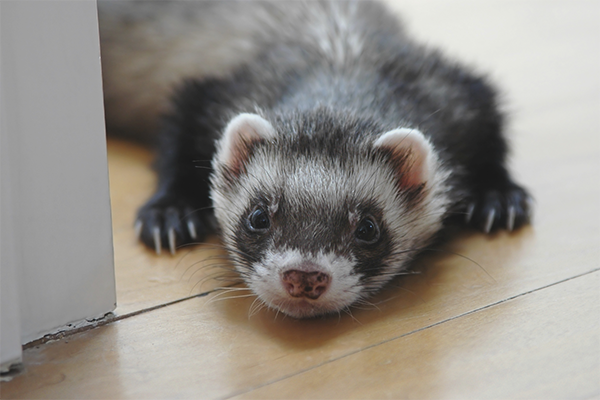
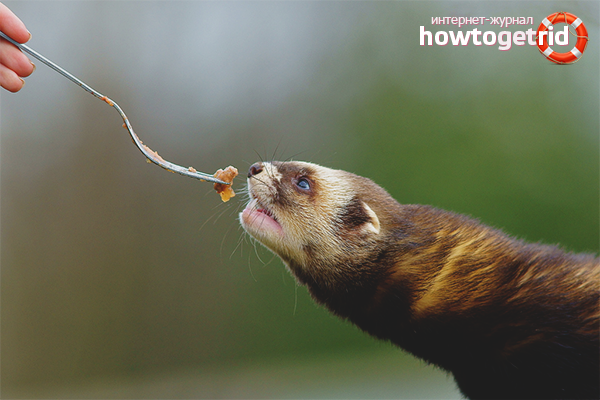

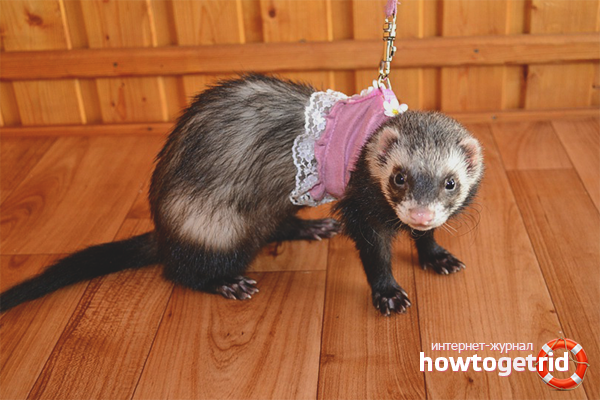

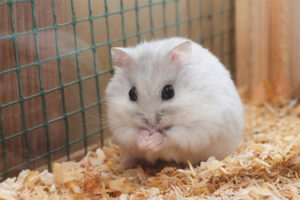


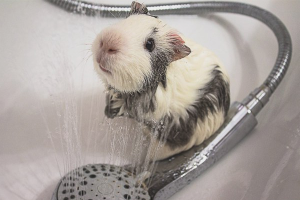

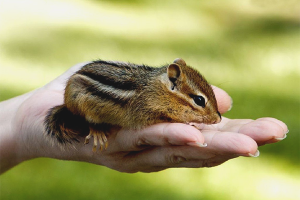
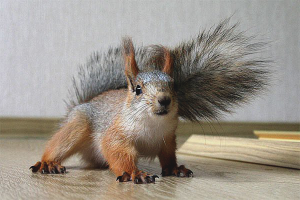
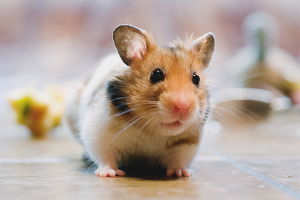
To send